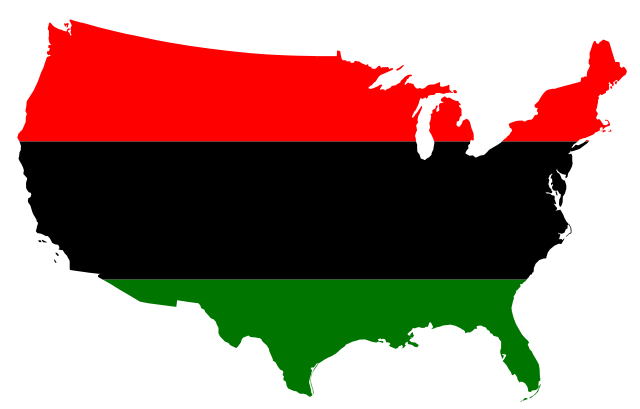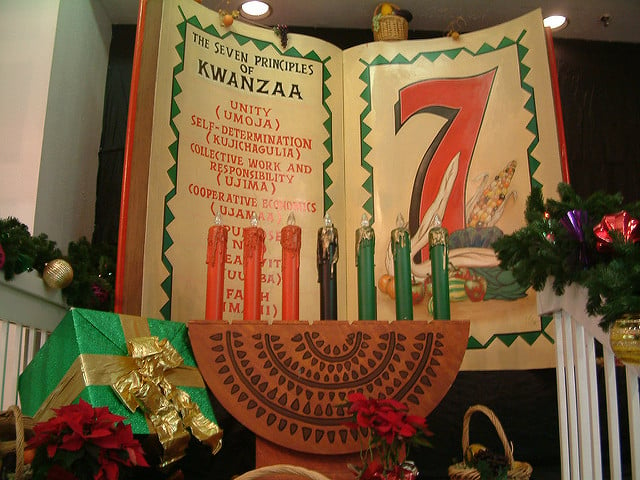Celebrate Kwanzaa: A Social Holiday
My memories of Kwanzaa bring back visions of singing songs in primary school choir as part of the annual holiday performance, an honest effort by my Montessori school to be inclusive of all religions and beliefs. To this day I can still remember the tune:
Kwanzaa is a holiday,
Kwanzaa, Kwanzaa,
Kwanzaa is an African holiday
Although after that refrain I struggle to remember the rest of the song, I am quite familiar with the holiday, which brings me here, today, to enlighten and get in touch with the secular holiday celebrated in the African-American community beginning December 26th and ending December 31st every year. Read on as we look into the history, traditions, and celebration as a whole.
History of Kwanzaa
Kwanzaa was created in 1966 as an attempt to unite the African-American community following the tumultuous Watt riots in Los Angeles that, after six days of violence between local police and citizens led to 34 deaths and over $40 million in property damage. The founder of Kwanzaa was a chairman of Black Studies at California State University, Long Beach named Dr. Maulana Karenga. In an effort to keep and celebrate their shared cultural heritage, Dr. Maulana Karenga blended several African cultures together, such as the Ashanti and Zulu, to create a social holiday that lasts seven days.

Photo via Wikimedia
Kwanzaa Celebrations
Kwanzaa is celebrated through music, dancing, storytelling, and traditional African meals. It takes place over seven nights, always between December 26th and January 1st. Each night a child lights each candle on the Kinara (candle holder) then everyone honors the principle of that day. There are seven principles called Nguzo Saba as well as seven symbols. Combined they are meant to be pillars to strengthen the African-American community.
The Seven Principles/Nguzo Saba
Each principle is honored on a day of Kwanzaa and they signify ideals to live by.
- The first principle is Umoja, or unity in the family and the black community.
- The second, Kujichagulia, or self-determination.
- Next, Ujima, collective work and responsibility. This principle is said to be this is necessary to solve the problems within the African-American community.
- Next is Ujamaa, for cooperative economics, which calls for building and expanding black commerce so that there can be mutual profit for all involved.
- Thus it is no surprise that Nia, or purpose, aims to help the African-American community to return to the days of prosperity and power, nor that
- Kumba, or creativity, requires that all efforts are placed to leave the African-American community in a more advantageous and higher standard than before.
- Consequently Imani, faith, is the drive to believe in the community and the justice in the struggle.

Photo via Flickr
Seven symbols
Along with the seven principles, there are seven symbols for Kwanzaa, each relating to the harvest:
- Firstly there is Mazao, symbolizing the foundation of Kwanzaa and how a family gathers together during the harvest to share in the planning and the enjoyment of the crops. For Kwaanza Mazao is represented by nuts and fruits and placed on the Mkeka, or the place mat.
- The Mkeka is made of Kente cloth or other African textiles and is where the African- American community support their lives on.
- Vibunzi, or an ear of corn is an image of fertility signifying that by growing a family the future can be expanded, so each Vibunzi placed on the Mkeka represents a family.
- The next symbol is the Mishuumaa Saba, or the Seven Candles: three red that represent Kujichagulia, Ujamaa, and Kuumba, and are set to the left of the Umoja, a black candle, and three green candles symbolizing Nia, Ujima, and Imani to the right of the Umoja. These candles embody the power of the sun and through each candle being lit usher in more visibility for the principle being celebrated.
- The candles are held in a Kinara and exemplify the stalk or ancestry where the African-American community came from.
- Following lighting of the candles, the Kikombe Cha Umoja, or the Unity Cup, is passed throughout the family and friends to promote solidarity then the eldest person pours the unity cup in the North, South, East and West paying respect to ancestors.
- Lastly, Zawadi are the gifts that are handmade to foster creativity and are given on the seventh day in honor of achievements met. Appropriately, these gifts are a gesture from the host to the recipient to unite everyone closer together into the family and the community.
Kwanzaa for the World
According to some surveys, as many as one in five African-Americans celebrate or recognize the social holiday. However, Kwanzaa is not limited to just the United States. As Kwanzaa has grown in popularity the celebration has garnered attention of documentaries and cultural phenomenons and has even spread to countries such as Canada, Great Britain, Jamaica, and France, and Brazil. Make 2016 your year and let’s use this time to recognize unity throughout the world.
